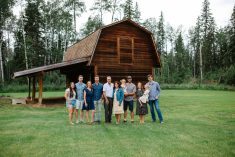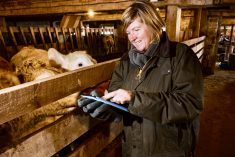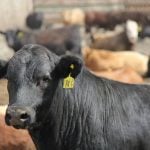Farmers might not think about retirement often, if ever. But the sooner you start to think about retiring, you can minimize the impact of the adjustment when the time comes.
A retirement plan should be part of the conversation when creating a succession plan. The emphasis of succession planning is typically on transferring the business to the next generation. There is often little consideration for the outgoing generation and the lifestyle they’ll need to finance post-retirement.
Incorporating a retirement plan into a succession plan requires looking at the mechanisms of the farm transfer from the perspective of the retiring farmer. How do they want to retire and how does that fit into the succession plan?
Read Also

The big squeeze: How to be fair to siblings during farm succession
Managing sibling business relationships on family farms.
The lifestyle you want
A retirement plan considers both financial and lifestyle aspects. It outlines the desired lifestyle and how it will be financed. Lifestyle considerations include leisure activities, how involved the outgoing farmer will continue to be in the business and the retiree’s living arrangements. The financial component considers any funds the retiree has saved (i.e., RRSPs, RRIFs, CPP, life savings, etc.) and if there are any supplemental funds from the farm operation. These considerations should be part of succession plan legal documents.
A farmer doesn’t have to retire cold turkey. In fact, it’s often best to gradually transition management and control from one generation to the next. Offering a managerial role to the next generation allows a farmer to take a step back and see where they can delegate responsibility. It can be difficult to pass on these management roles, but it’s important that the next generation is more involved. It allows the farmer to slow down but still provide guidance and input on bigger decisions.
Lifestyle depends on the financial stability of the operation and whether there are multiple families pulling income from the farm. It may not be possible for a farmer to step away if their labour helps the farm remain financially viable.
We recommend incorporating the transition of managerial roles into a partnership or shareholders’ agreement with specific milestones, such as the reduction of equity of the outgoing generation below a certain threshold or at a specific time. For example, a farmer may be required to resign as an officer of a farm corporation after 500,000 of their special shares are redeemed.
The finances you’ll need
Many farmers put their life savings into the farm. Passing the farm to the next generation — whether by sale, gift or some other method — means they will most likely require money from the farm to fund their retirement.
A shareholders’ agreement can stipulate how the retiree would be paid from the farm corporation while allowing the farm corporation to remain financially stable. Options include wages, redemption of special shares, or dividends.
Wages are paid to the farmer through payroll and taxed as employment income. The retiree may exchange their common shares for special shares as part of reorganizing the farm corporation during the succession process. The retiree may redeem a quantity of special shares to live off each year. The retiree may be paid by dividends each year, or dividends can be paid out with either common shares or special shares. Tax implications should be considered to determine the best method. We also recommend adding an adjustment clause tying the payment amounts to inflation to ensure the retiree’s purchasing power does not decrease over time.
From a legal perspective, it is important for the retiree to negotiate releases from personal guarantees to any financial institutions. They should also obtain security over assets to ensure financial protection. And they’ll want to ensure there is sufficient equity and cash flow in the operation to fund the lifestyle they plan to have.
A shareholder or partnership agreement should contemplate a reversal of the succession plan if the next generation mismanages the operation. This may seem like a harsh outcome, but so is living on less because the retiree failed to ensure their financial security in retirement.
A retirement plan is a critical part of succession planning, but it’s often minimized during the process. Lifestyle costs need to be within what the farm operation can support and still allow for growth. Ultimately, the goal is to ensure that the incoming generation can survive on the farm’s revenue and that the outgoing generation’s retirement lifestyle does not distress the farm’s financial situation. Everyone must agree on the retirement plan, or it could mean that the scope of the operation needs to change and other assets sold off to support the plan. Once these factors are determined, draft and implement a retirement plan that includes milestones for gradual succession.
– Jon Barnett and Ashley Podolinsky are lawyers with McKenzie Lake Lawyers located in London, Ontario, with offices also in Guelph. Both have extensive experience with agribusiness and succession planning. For full details, please view their biographies at mckenzielake.com.















